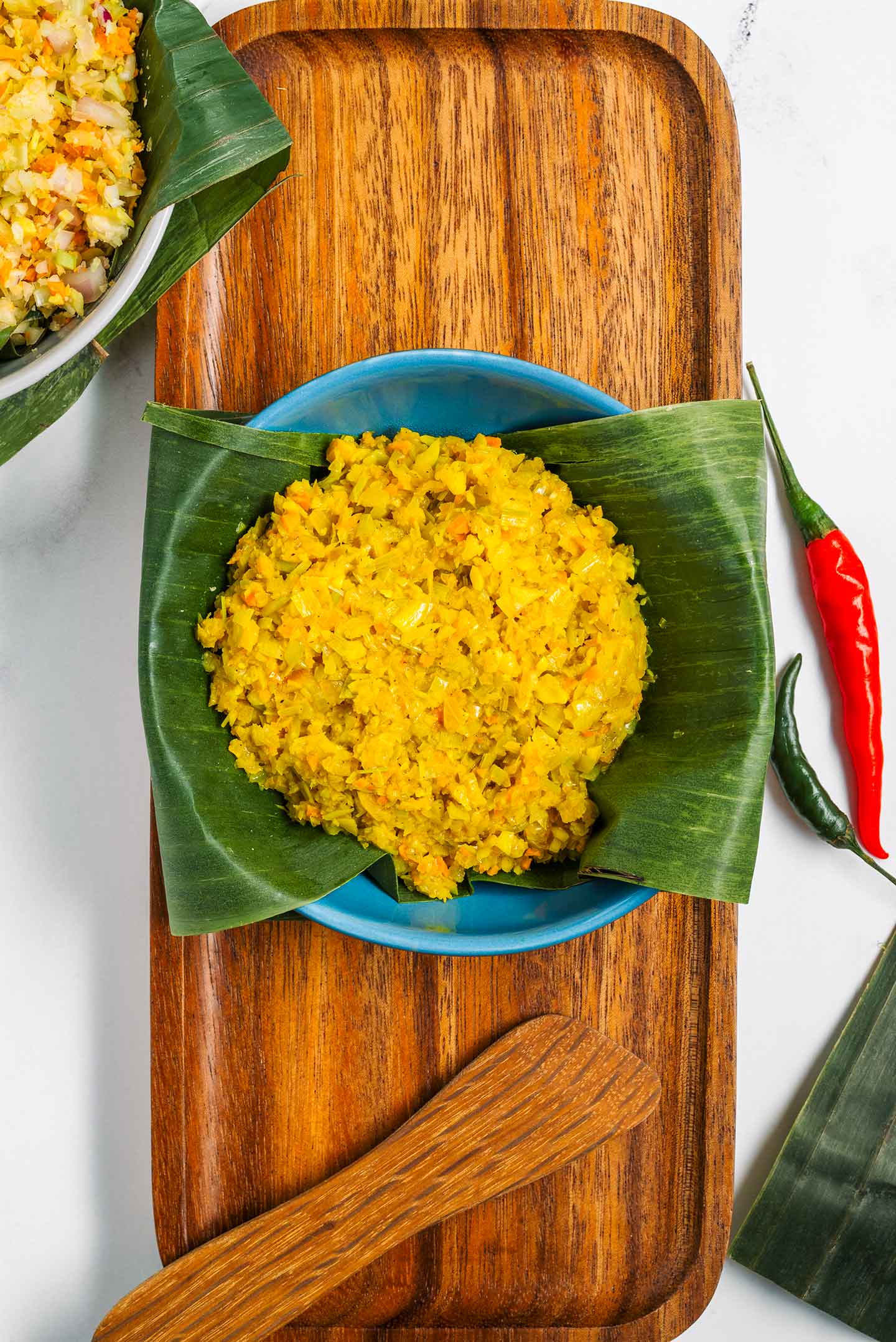
This Balinese spice paste was taught to me by our local hosts during a trip to Bali. They made us so many incredibly flavourful dishes and explained that this basa bali spice paste is the base for creating that flavour profile. This mixture of flavour packed and aromatic herbs comes together as quickly as you can chop! Use it to flavour a wide array of Balinese inspired dishes!
Aromatic
Packed with flavour
Simple to prepare
Freeze it & take out what you need when you need it!
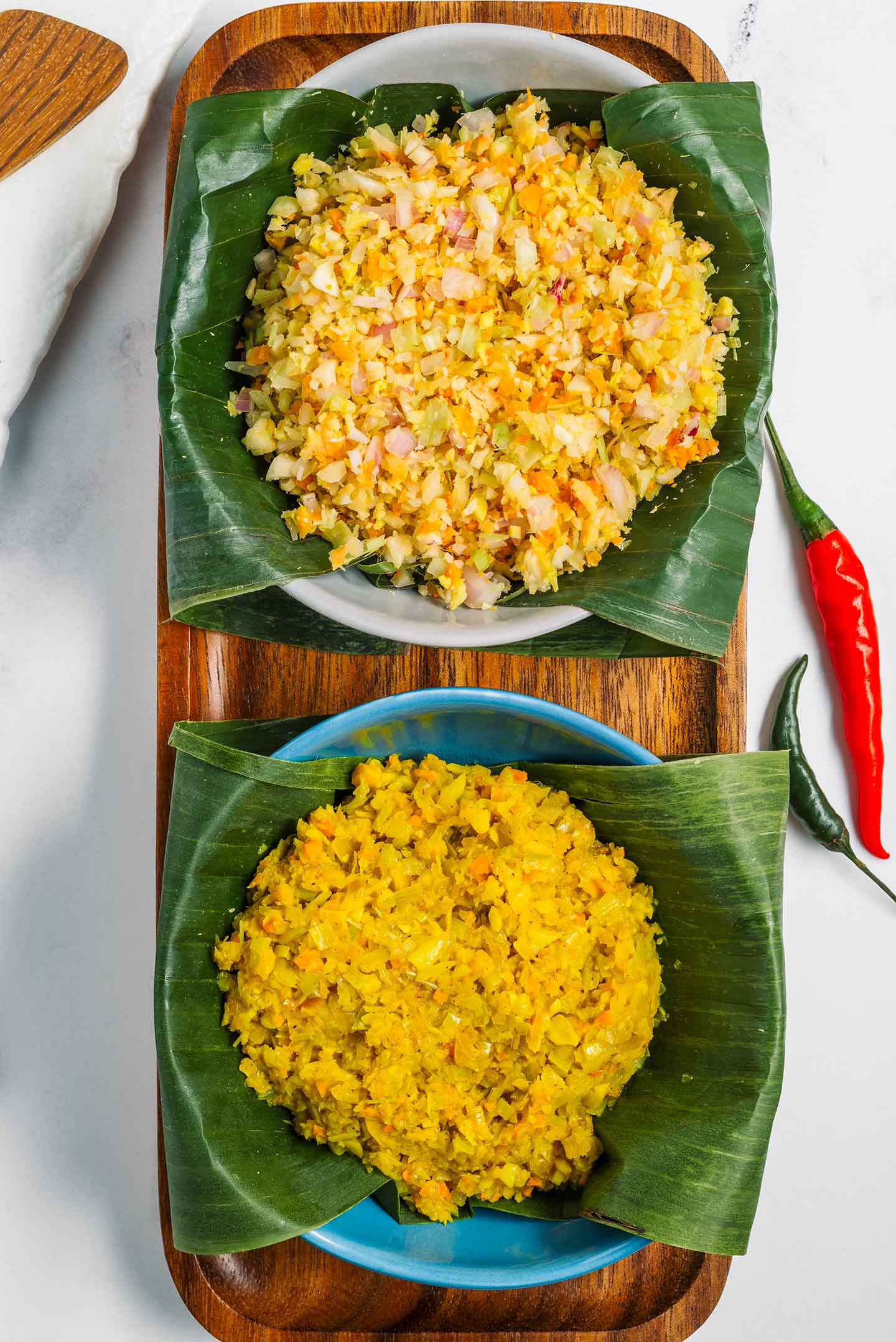
Ingredients
The traditional ingredients in basa bali, as taught to me, are as follows:
- Galangal
- Lemongrass
- Ginger
- Aromatic ginger (or sand ginger)
- Turmeric
- Candlenuts (or kemiri nuts)
- Shallot
- Garlic
- Plus white pepper, kaffir lime leaves, and bay leaves when the paste is fried
If you are like me and don't have much experience cooking Southeast Asian cuisine, there are likely a few ingredients listed that are unfamiliar to you.
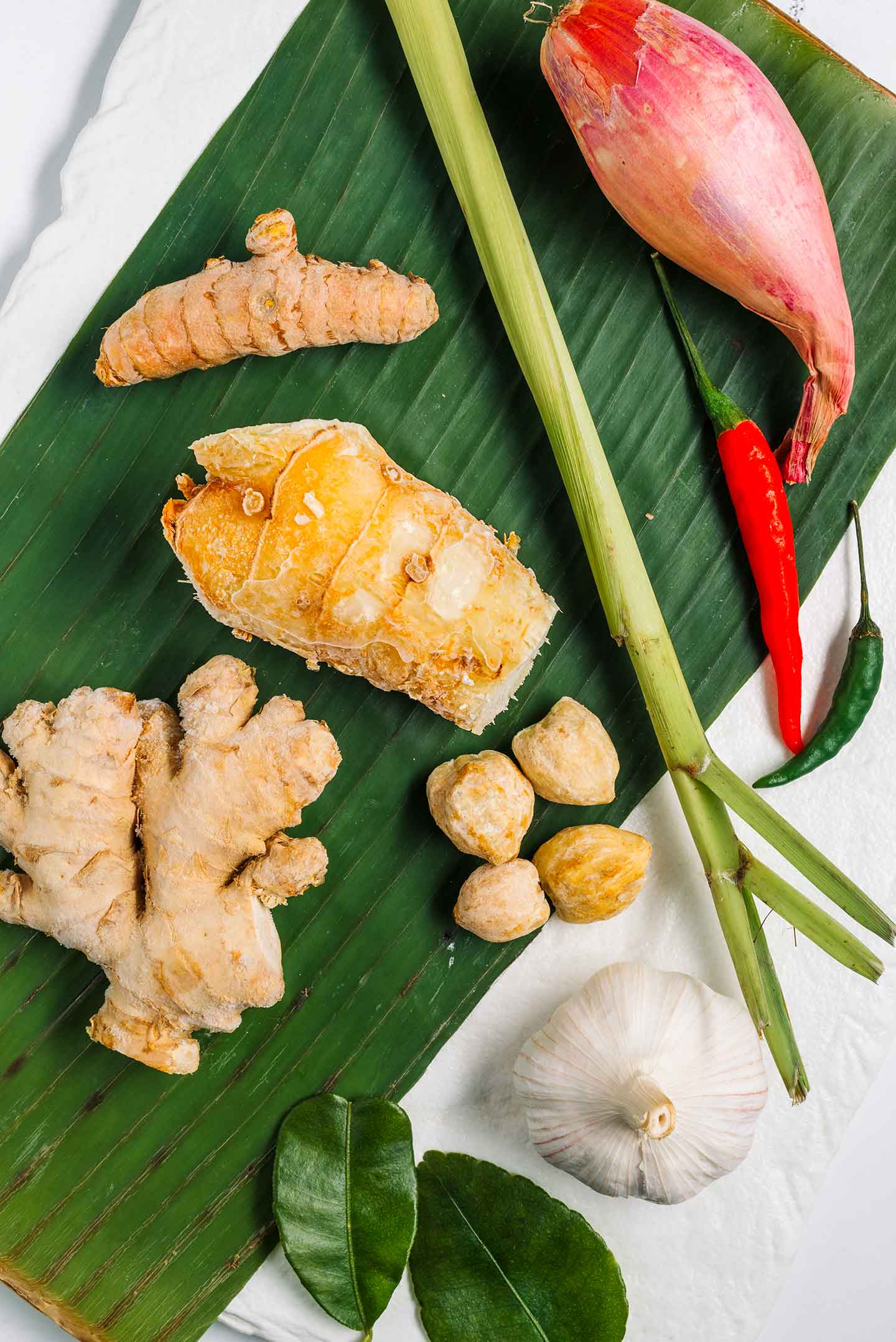
Galangal
The first new ingredient for me was galangal. I had anticipated that I would have trouble finding it once I returned to Canada. With just one trip to a local Asian market however, I found it! I had to ask an employee once I could not find the fresh rhizome but they guided me to the freezer section and handed me frozen galangal. Make sure to check for frozen or powdered galangal if you can't find it fresh!
"Hot Thai Kitchen" has a great blog post titled, "What Is Galangal and How to Use it for Cooking". Pai is my go to chef and YouTuber for Thai cuisine and ingredients often used in Southeast Asian cooking. She explains that galangal is a key ingredient in curry pastes and popular soups like tom yum soup.
I confess, I initially thought I might be able to substitute galangal with ginger if I was not able to find it. Pai addresses that most people assume this but although the two look similar, their flavour is very different. When I tasted the frozen galangal I purchased I was hit with an intensely piney (almost minty or menthol-like) flavour. It is much more cool and citrusy than the hot and spicy taste of ginger.
Aromatic Ginger
Now, finding aromatic ginger (or sand ginger) has been harder for me. The Woks Of Life has a great blog post about sand ginger. It is related to common ginger and galangal but is again, a little different in flavour. It also has a tougher and more woody texture so it is a little more difficult to work with than common ginger. The Woks Of Life explain that it has been used in traditional medicine and Southeast Asian cuisine for centuries but is less commonly found in the West.
Unfortunately, I have not been able to find it fresh, frozen, or powdered. I decided to increase the amount of common ginger in my recipe by just a little. This accounts for not including any aromatic ginger.
Candlenuts
When I was in Bali and shown kemiri nuts I was not sure what they were. Their appearance is closest to macadamia nuts but their taste is closer to a chestnut in my opinion. The English name is candlenut and I was anticipating I would have to substitute macadamia nuts in my recipe. Similar to my experience with galangal however, one trip to my local Asian market resulted in me immediately locating a small package of candlenuts.
The blog LinsFood has a helpful post about candlenuts and mentions that they are slightly toxic when raw. So don't snack on your candlenuts as you are making this basa bali spice paste. Also, make sure to use the paste only in food that will be cooked.
Finally, you may be unfamiliar with lemongrass but it is typically very easy to find in large local grocery stores. Once again, Pai has a fantastic blog and video 101 on lemongrass here!
How To Make Basa Bali Spice Paste
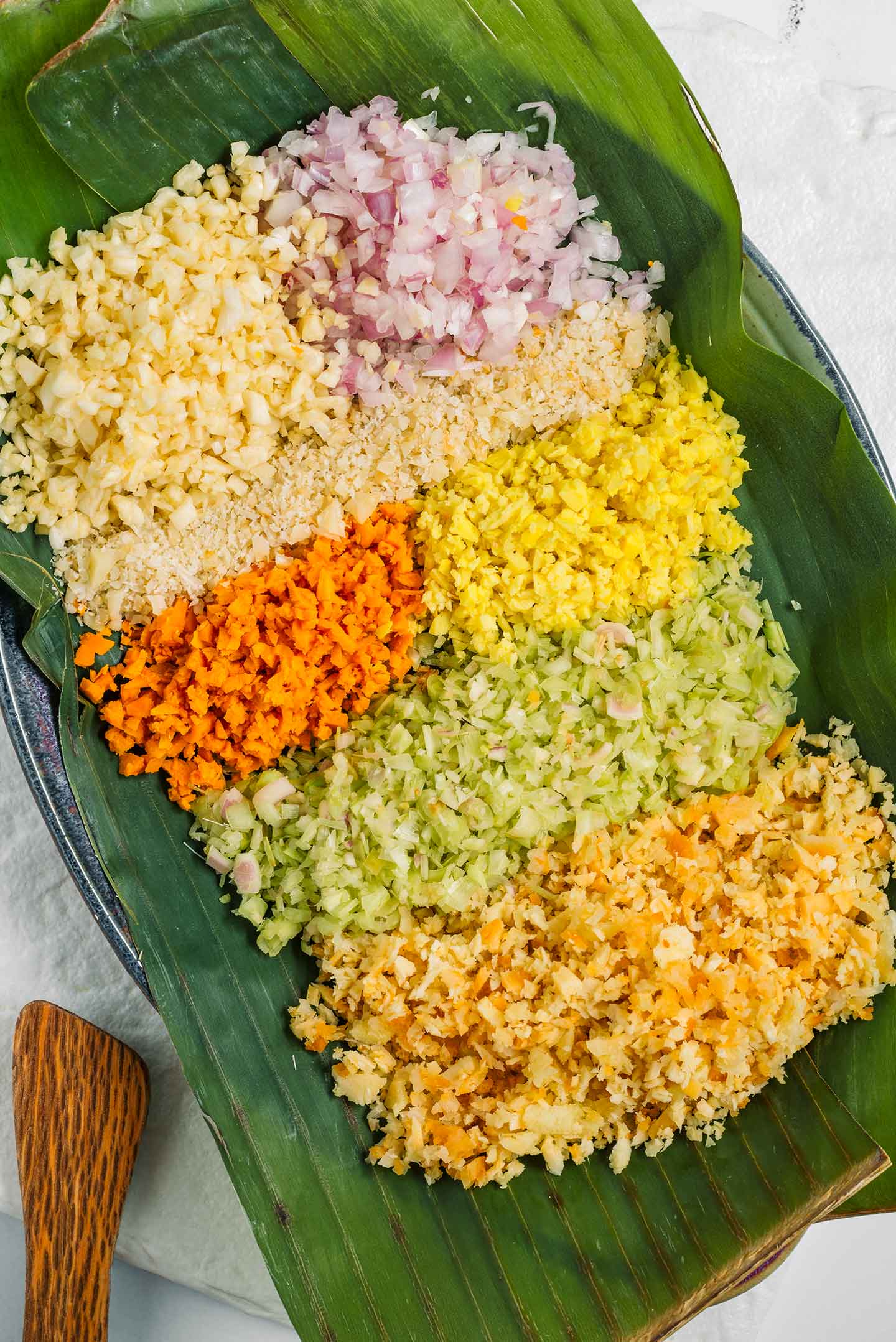
The method for making this basa bali spice paste is very straightforward.
All of the ingredients are very finely chopped and mixed together. Then, the mixture can be stored raw or cooked right away. My host, Komang, in Bali instructed me to keep half raw to add to dishes that will be cooked later and to immediately fry half. Komang told me she tends to freeze the fried paste and scoop out a tablespoon or two when she needs it.
Depending on the dishes you are making with your basa bali spice paste, you may want to fry the whole amount OR freeze the raw mixture and cook it when needed.
When the mixture is fried it breaks down into a paste like consistency. If you prefer to use less oil, I have an option for you! Pound the mixture into a paste with a mortar and pestle or use a food processor. Then, sauté the mixture in just a bit of oil.
Using a food processor from the beginning can change the flavour of the mixture. It might become a little more bitter. It's a good idea to at least roughly chop the ingredients by hand first to give the cells a chance to break down more gently. Then use a food processor to make quicker work of creating the paste.
When you cook your basa bali make sure to add a couple of torn kaffir lime and bay leaves to the mixture. A bit of white pepper and salt can also help to bring out the flavours of all of the herbs. Chillies can be added now if preferred or you can wait and control the spice levels when you make an actual dish!

Applications
I have recreated a few of the recipes we had in Bali that were flavoured by this spice mixutre. Tofu pepes (steamed tofu in banana leaves), Balinese tempeh, and urab (or urap) which is a salad of steamed vegetables and shredded coconut.
All of these recipes are so simple to prepare and absolutely blast with flavour once you have made your basa bali spice paste.
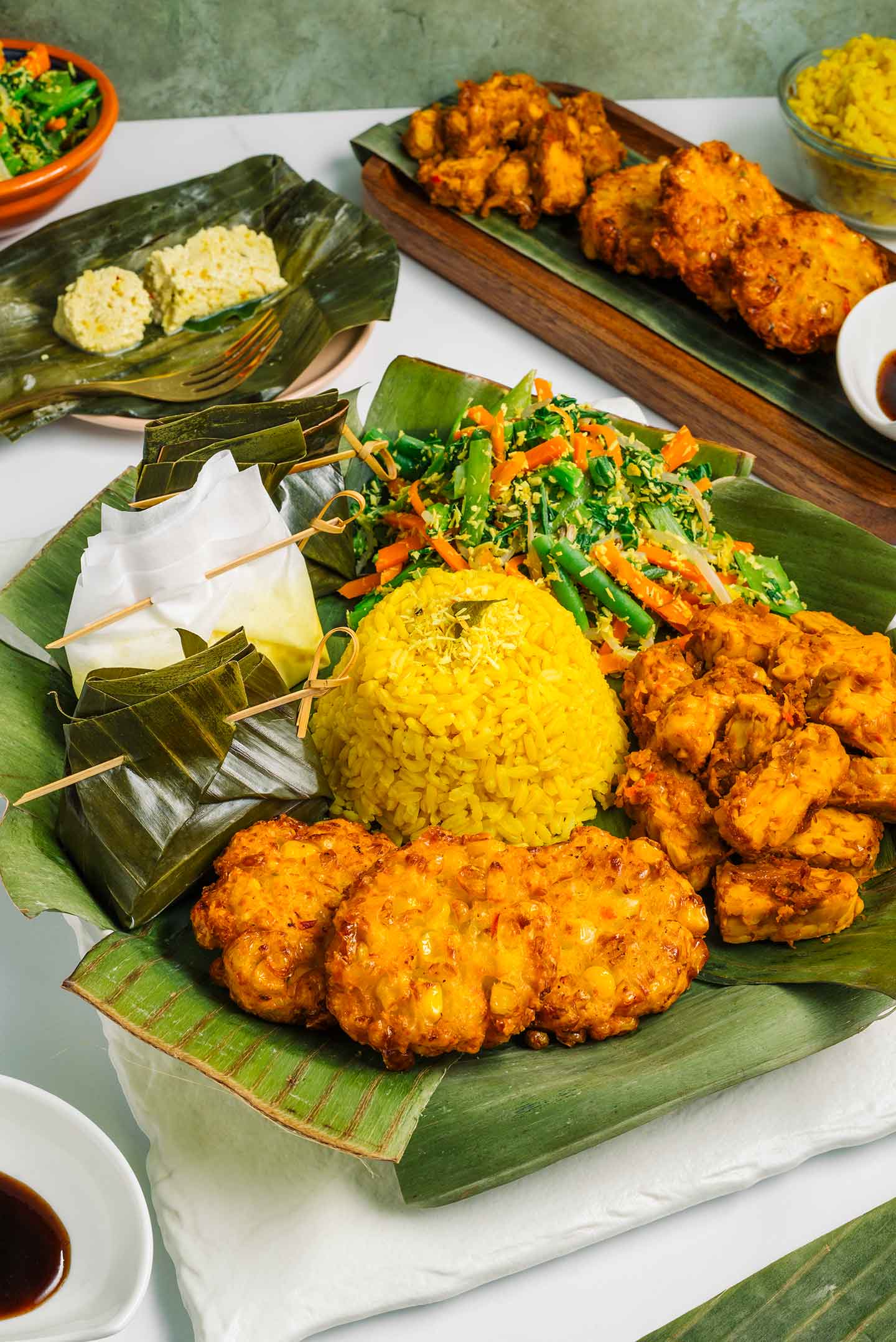
Nasi goreng or mie goreng (fried rice or fried noodles) are very popular Indonesian dishes. Many recipes I have found online rely mostly on kecap manis (a sweetened Indonesian soy sauce) and some ginger, garlic, shallot, and chillies. By using this basa bali however, you will get so much more of that fresh and aromatic flavour.
Recipe Cost
This basa bali spice paste costs me about $5 Canadian and yields 235 grams. Adding the chillies directly to this paste can add about 50 cents to my cost. I love the fact that I can freeze this paste and draw from it as I need!
Create your own batch of basa bali spice paste and let me know in the comments below how you use it!
Print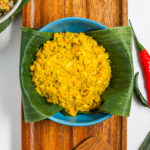
Basa Bali Recipe - Basic Balinese Spice Paste
- Total Time: 30 minutes
- Yield: 235 g 1x
- Diet: Vegan
Description
Basa bali spice paste to flavour your Balinese inspired dishes! This basic spice paste is your key to that aromatic Balinese flavour profile.
Ingredients
- ⅓ cup (60 g) galangal, minced*
- ⅓ cup lemongrass, minced* (one stalk)
- 2 ½ - 3 tablespoon ginger, minced
- 2 ½ - 3 tablespoon turmeric, minced
- 3-4 candlenuts, minced*
- ⅓ cup shallot, minced (30g)
- ⅓ cup garlic, minced (30g)
Add when cooked:
- 1-2 kaffir lime leaves*
- 1-2 fresh bay leaves (fresh salam leaves, see notes for dried)*
- ¼ tsp salt
- Pinch white pepper
Optionally add now:
- 1-2 long red chillies, deseeded*
- 1 green birds eye chilli, deseeded*
*Ingredients you need that are not part of our pantry and freezer tips.
Instructions
*Don’t snack on your candlenuts as they are slightly toxic when raw. This spice mixture should always be used in food that will be cooked.
*Using a food processor can result in a more bitter flavour. It is best to at least roughly chop the ingredients first to properly release their aroma and flavour. Then you can make quicker work of processing them into a paste with a machine if you’d like.
- Peel fresh or frozen galangal and mince (see photos in the blog post above for a size reference).
- Use the thickest part of your lemongrass stalk as that is where the flavour is concentrated. Discard where the top of the stalk starts to thin out, the very base of the stalk, and any loose layers of lemongrass that you can easily remove (add them to your frozen veggie scraps to infuse homemade vegetable broth). Carefully use the back of your knife to bash the lemongrass and make it simpler to chop. Proceed to slice and then mince the lemongrass.
- Peel your ginger (or scrub it well if you leave the skin on). Mince or grate. *Aromatic ginger (or sand ginger) is also traditionally added to this recipe but I have not been able to find it in stores and I understand it is not common to find it in many Western countries. If you do have access to it, add 1-2 tablespoon aromatic ginger as well!
- Before you peel your turmeric be aware that it has a tendency to stain. Use a cutting board you don’t mind staining and protect your hands if desired. Wash all of the equipment used right away. Peel and mince the turmeric.
- Mince or grate 2-3 candlenuts.
- Peel and mince the shallot and garlic.
- The optional chillies can be added to this mixture or add chillies when you use this paste in a dish. That way you can control for the spice level you want in that particular dish.
- Mix all of the herbs together. Keep some uncooked to use in a recipe like Tofu Pepe’s if desired. Otherwise, fry the mixture in ½ tablespoon neutral oil for 5-10 minutes with torn kaffir lime and fresh basil leaves, white pepper, and salt. Add splashes of water as needed to encourage the paste to break down and mash with a spoon as the paste cooks.
- Use your basa bali immediately or allow to cool and store in the fridge for up to 2 days or freeze for longer storage. Generally, recipes will call for 1-2 tablespoon basa bali to flavour a dish.
Notes
Approximate Cost: $5 CAN without the chillies. Adding chillies directly to the paste can increase my cost by about 50 cents.
Galangal will be available at most Asian grocery stores. It is a common ingredient in Southeast Asian cuisine so if you cannot find it fresh it can likely be found frozen. If you don’t have any luck finding it, there unfortunately is not a great direct substitute. I would increase the amounts of lemongrass and ginger by a bit. Otherwise I would simply omit the galangal from this recipe. The flavour will certainly be different but you will still create a flavourful paste.
If you cannot find any ingredient in its fresh form, you can consider using frozen, dried, or powdered. For instance, I cannot find fresh bay leaves so I add a dried bay leaf to the mixture as I cook it. A general rule of thumb is to use 1 teaspoon ground spice or herb for every 3 tablespoon fresh.
Candlenuts or kemiri nuts can commonly be found at Asian grocers but macadamia nuts can be used instead.
- Prep Time: 20 minutes
- Cook Time: 10 minutes
- Category: Sauces & Dips
- Method: Various
- Cuisine: Indonesian


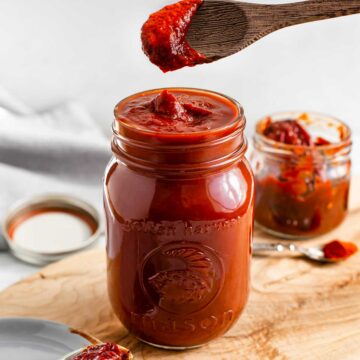
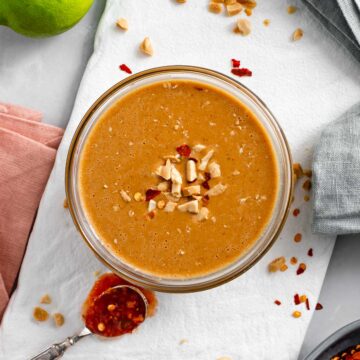
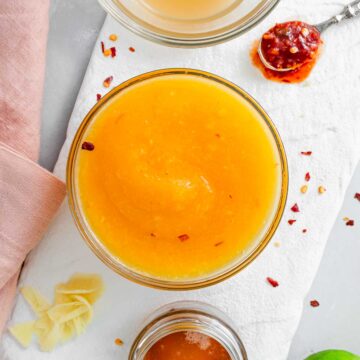
Leave A Review